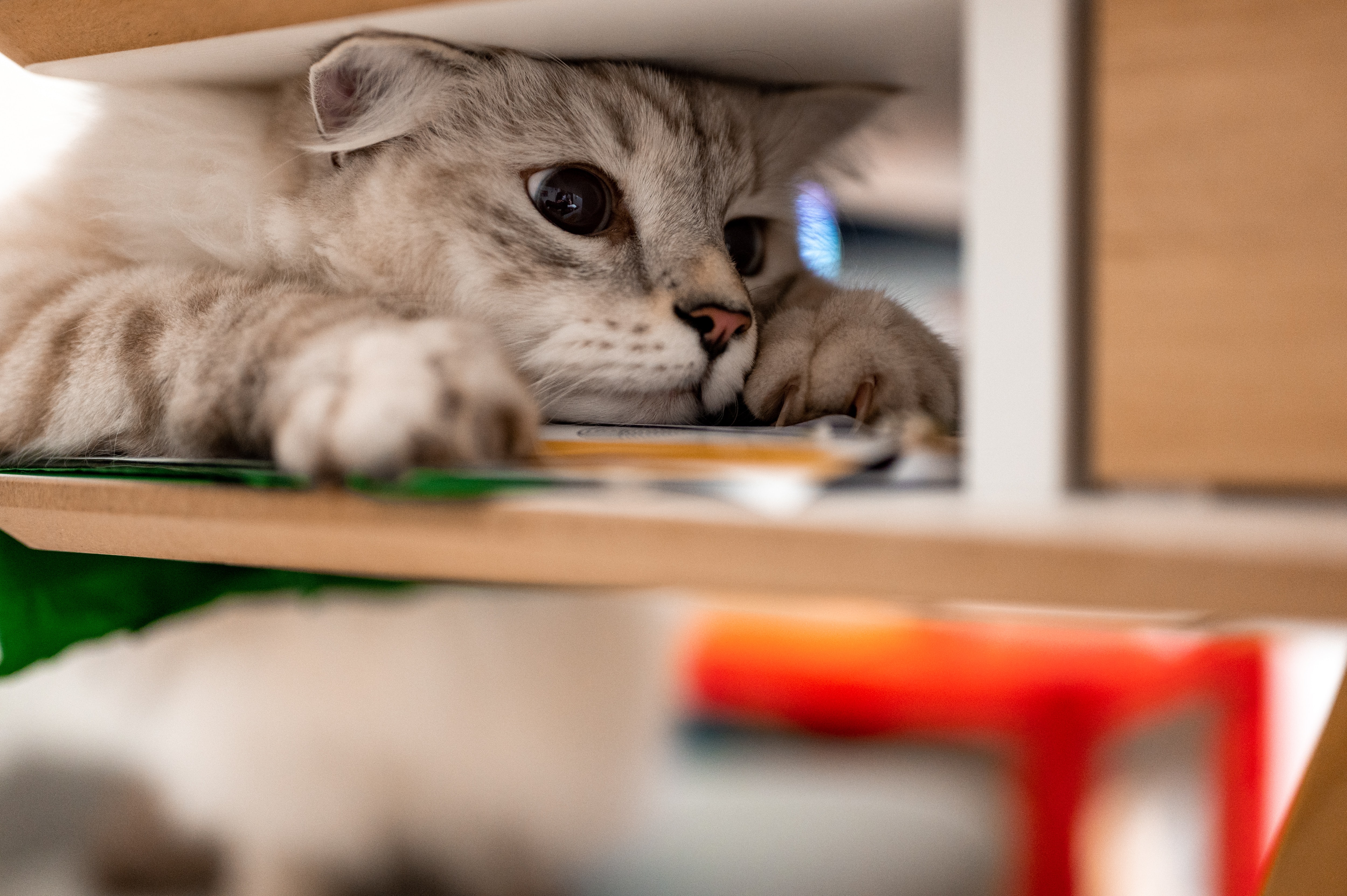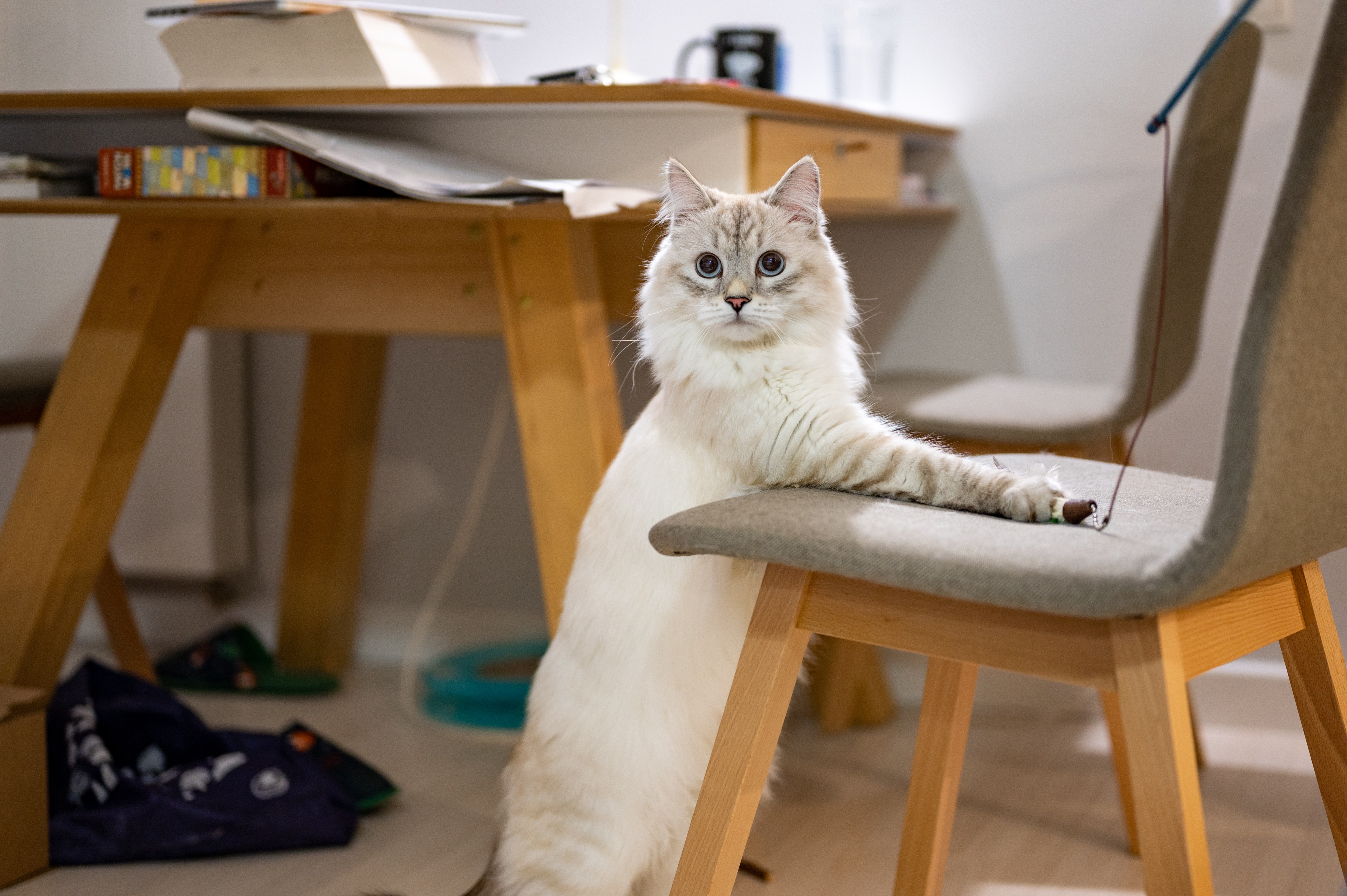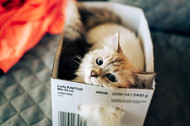Litter Box Issues?
Posted by Kate on Jan 11th 2022
Cat parenthood is a beautiful thing. But what happens when your beloved feline stops using their litter box? It's a wildly frustrating situation to deal with, and it's a reason many cats wind up at the animal shelter. Let's get one thing straight: cats don’t wake up with an agenda. They are not plotting to make your life miserable. They’re not looking to avenge or annoy (although some folks may beg to differ). So when your cat pees in your laundry hamper out of the blue they're not "just being a jerk."
We need to do some digging to find out why this behavior occurred and take appropriate steps to curb it. It can be maddening (and it's certainly not ideal), but it’s how our cats communicate with us: Something is wrong. To start, we need to figure out if this problem is a.) behavioral or b.) medical.
A medical issue begs a trip to vet. Behavioral issues are often solved with adjustments to a cat's diet or environment. Let's start with some basics today, and we'll unpack some of these issues and ailments down the road.
If your cat is struggling or appears to be in pain, consult your vet immediately. There are several medical issues that can cause painful urination. These conditions should be diagnosed by a licensed veterinarian and may include:
- Urinary tract infections. If your cat makes frequent trips to the litter box but produces little to no urine, this could be a sign of a UTI.
- Bladder stones or urinary crystals. These blockages make urination painful - you might hear crying or meowing as your cat struggles to eliminate.
- Feline interstitial cystitis. This neurological disease affects the bladder and causes a sense of urgency, so your cat may not be able to make it to the box in time. The diagnosis indicates that there may be no identifiable cause, so it’s very important that we examine the cat’s environment to rule out any stressors that may be causing improper elimination.
Many of these ailments are caused by chronic dehydration. Feeding your cat a wet food diet can drastically reduce their chances of bladder infections, blockages, and renal failure. Feed a predominately dry food diet? It is more likely that litter box woes are medically-related. Feed predominantly wet? Chances are your cat is well hydrated and the issue is behavioral. I'll be doing a deep dive into the importance of wet food, but that's a topic for another day.

Behavioral issues (generally caused by environmental stressors) may take more time and patience to identify, but it beats an expensive vet visit. Here are some things to consider:
- The litter box is not clean enough (according to their standards). I recommend cleaning the box out at least once a day. Some finicky cats might prefer two or more cleanings daily. Would you rather use a Porta Potty at the beginning of the day or the end of it? (;
- Location, location, location. Consider quiet, low traffic areas that are easily accessible and away from food/water sources. If you have multiple floors in your home, consider one box per floor.
- Litter preference or aversion. There are dozens of litters to choose from. Most cats prefer an unscented, clumping litter. Some cats are particular about their litter, and if it gets changed on a whim they might decide to take their business elsewhere.
- They’re just missing the mark. If your cat is going right outside of the box, it’s likely they know where they should go; they’re just not situating themselves correctly. Consider a high-back or top-entry box.
- Someone (or something) is obstructing the path to the box. If it’s not easily accessible, they may be less inclined to use it. If you have a multi-pet household, watch the activity around the litter box - you might have a guard. To the untrained eye, it may look like another animal is just “hanging out.” But there’s a chance they may be bullying your cat and not allowing them to pass through. This leads your cat to head for the laundry hamper. Or your favorite rug.
- They don’t want to share. Cats are extremely territorial. It is recommended that you have one litter box per cat plus one. This means if you have three cats, four litter boxes is ideal.
- They’ve claimed another spot in the home as the bathroom (or male cats are trying to out-mark each other). If your cat is a repeat offender (they continue to pee on one specific spot), make sure the crime scene is completely clean. A cat’s sense of smell is 14x greater than humans, so an enzymatic cleaner is a must. Enzyme cleaners break down ammonia, carbon dioxide, and proteins (that cause cats to constantly mark the same spot).
Consider this: Cats typically don't handle abrupt change well. Switching the litter, moving the box, adopting a new puppy, having a baby, going on vacation - these can all cause a disruption in kitty’s world and may result in unsavory behavior. We’ll talk more about this later.
It is very important to note: Do not punish your cat for going outside of the litter box. Imagine having a painful UTI and getting scolded or chased off if you have an accident on the way to the bathroom. Be sure to rule out any medical issues and use process of elimination to determine what is causing the behavior. Feel free to give us a call or come in to chat further.

While most of this post refers to cats peeing outside of the box, if #2 is your #1 problem, use the same process of elimination to figure out the crux of the issue. Examine the environment. Consult your vet to rule out medical issues. Consider adding an extra box - I've witnessed single-cat households who need two boxes because the cat prefers to use one box for liquids and one for solids. Seriously.
We have so much more ground to cover, but I hope this serves as a good place to start. Until next time, be sure you're following us on Instagram and Facebook.
Disclaimer: I am not a licensed veterinarian. All information and content you see here is for informational purposes only and is not intended to be a substitute for professional medical advice, diagnosis, or treatment. If your animal is experiencing anything out of the norm, I strongly encourage you to do some research, get a second opinion, and consult your vet.

